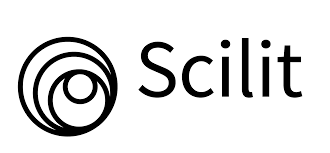Evaluation Of The Haematology Profile And Blood Chemistry Of Macaca nemestrina (Linnaeus, 1766) At Primate Research Center, IPB University
Evaluasi Profil Hematologi dan Kimia Darah Macaca nemestrina (Linnaeus, 1766) di Pusat Studi Satwa Primata, IPB University
Abstract
Macaca nemestrina (Linnaeus, 1766) or macaque is a primate that was successfully bred by Primate Research Centre (PRC) IPB University as an effort to conserve and use it as a model animal in biomedical research. macaque with ID. Tattoo 6180 is a male macaque ± 23 years old in a coral cage B which focuses on breeding purposes in captivity to produce offspring. Health evaluation of ID. Tattoo 6180 becomes one of the important things related to those goal. The purpose of this study was to measure the haematological and blood chemistry profile of macaque with ID. Tattoo 6180. The method used in this research is descriptive observational to identify blood cell composition, leukocyte differentiation, and blood chemistry. Based on the measurement results, it is known that the hematologic profiles including White Blood Cell/WBC (7.5×103/µl), Mean Corpuscular Haemoglobin/MCH (23.4 pg), Mean Corpuscular Haemoglobin Concentration/MCHC (33.2 g/dL), and Platelets/PLT (231×103/µl) have values outside the normal range. The results of the leukocyte differential examination showed that the N/L value was 4.68 exceeded the normal value. In addition, the results of blood chemistry measurements including SGOT (119.1 U/L), Calcium (7.0 mg/dL), Phosphorus (37.9 mg/dL), and Cholesterol (87 mg/dL) also have values outside the normal range. Results examination showed that the macaque with ID. Tattoo 6180 was diagnosed as hyperchromic macrocytic / microcytic without anaemia, stress, thrombocytopenia, muscle injury / inflammation of the heart, and hypercholesterolemia. Further examination is needed to establish the macaque health status.
Copyright (c) 2023 Indonesian Journal of Primatology

This work is licensed under a Creative Commons Attribution-NonCommercial 4.0 International License.
As our aim is to disseminate original research articles, hence publishing rights is necessary. The publishing right is needed in order to reach an agreement between the author and publisher. As the journal is fully open access, the authors will sign an exclusive license agreement, where authors have copyright but license exclusive publishing rights in their article to the publisher. The authors have the right to:
- Share their article in the same ways permitted to third parties under the relevant user license.
- Retain patent, trademark, and other intellectual property rights including research data.
- Proper attribution and credit for the published work.
For the open access article, the publisher is granted the following rights.
- The exclusive right to publish the article, and grant rights to others, including for commercial purposes.
- For the published article, the publisher applied for the Creative Commons Attribution-NonCommercial-ShareAlike 4.0 International License.

This work is licensed under a Creative Commons Attribution-ShareAlike 4.0 International License.















